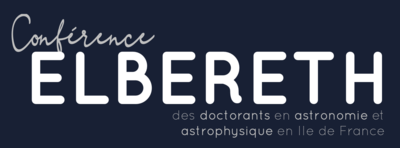Orateur
Description
The search for traces of past or present life is a major objective of the exploration of Mars. Subsurface environments, such as caves and lava tubes, are of significant exobiological interest for their potential as both refuges for extant life and/or reservoirs for ‘preserved’ traces of life (i.e., biosignatures). Unlike the Martian surface, subsurface environments can provide protection from intense radiation and oxidants and more stable climatic conditions [1]. Thousands of lava tubes have been identified on Mars through orbital radar imaging [2], but their habitability potential has yet to be assessed by in situ space missions. Terrestrial analogues are being used in support of planetary exploration because of their similarities with the conditions and mineralogies of planetary bodies target by space missions. On Earth, lava tubes are formed by volcanic processes, and host diverse microbial communities that interact with their mineralogical environment, leading to the formation of secondary mineral deposits. Those terrestrial lava tubes can serve as natural analogues [3] to investigate the types of biomarkers and geological processes that might also be found in Martian subsurface environments.
This ongoing work focuses on the chemical characterization of basalt and secondary mineral deposit samples from Lava Beds National Monument (LBNM), California, and Mauna Loa, Hawaii (USA). The objectives are: to assess the content and diversity in organic molecules and their relationship with the microbial life present in these environments, to evaluate the ability of flight-like analytical techniques to detect biomarkers, and to better understand the relationship between microbial activity, mineralogy, and biomarker content.
To characterize the samples, we employed a multidisciplinary approach consisting in mineralogical, biological, and chemical analyses. X-Ray Diffraction, Raman spectroscopy, and Laser-Induced Breakdown spectroscopy measurements revealed that the LBNM and Hawaii samples are dominated by silicates and sulfates, respectively, while metagenomics studies showed that most samples are dominated by Proteobacteria and Actinobacteria, and host a diversity of chemotrophic microorganisms. At LATMOS, Gas Chromatography-Mass Spectrometry experiments (GC-MS) are being performed under both laboratory and flight-like conditions encompassing pyrolysis, thermochemolysis and derivatization (a chemical transformation aiding the detection of polar compounds by GC-MS) to reproduce the analytical methods of current and future Martian rovers [4, 5]. Results showed the detection of a great variety of organic molecules including biosignatures such as lipids, nucleobases, sugars, and amino acids. These findings improve our understanding of the biogeochemical processes in subsurface environments and confirm recent and uprising studies about secondary minerals in lava tubes being promising targets for future planetary missions.
[1] Boston et al, Astrobiology 2001, 1 (1), 25–55; [2] Cushing et al, J. Geophys. Res. Planets 2015, 120, 1023-1043; [3] Léveillé et al, Planetary and Space Science 2010, 58 (4), 592–598; [4] Mahaffy et al, Space Sci Rev 2012, 170:401–478; [5] Goetz et al, Int J Astrobiol 2016, 15:239–250.
| Astrophysics Field | Planetology, Exobiology |
|---|

